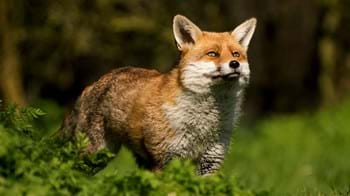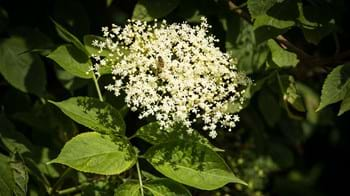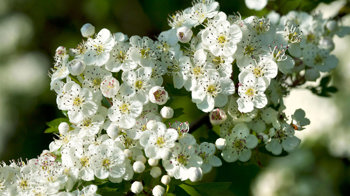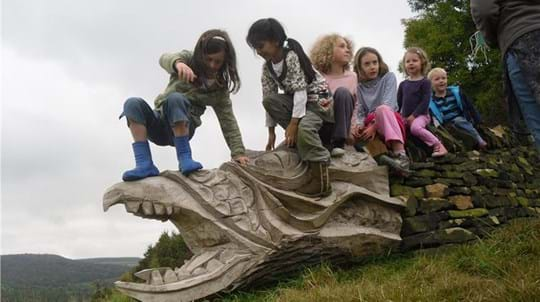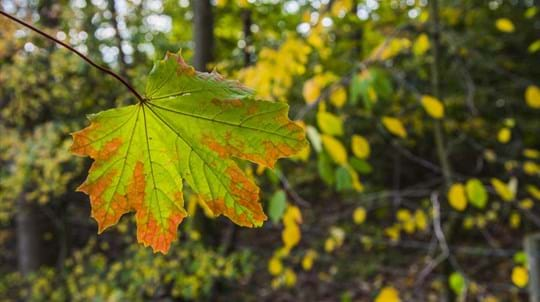
Bitholmes Wood
Oughtibridge

Woodland Trust wood
28.80 ha (71.16 acres)
SK293964
Explorer 278
OS Landranger 110
Nestled in between the city of Sheffield and the Peak District, this semi-natural ancient woodland overlooks the Don Valley.
Features
- Public access
- Broadleaved woodland
How to get to Bitholmes Wood
Bitholmes Wood lies about 11km (7 miles) north of Sheffield and 3km (2 miles) south of Stocksbridge within the South Yorkshire National Forest.
Head north from Sheffield along the A6102 through Oughtibridge and Wharncliffe Side. After 1 km (0.5 miles), turn left onto More Hall Lane (signposted Bolsterstone). Continue up the hill until you reach Hare Hills Lane. An entrance here gives access to the circular walk through the wood.
The nearest train station is in Sheffield.
Visit National Rail for more information.
The nearest bus stop is on the A6102 in the village of Wharncliffe Side, about 1km (0.5 miles) to the south of the wood.
Visit Traveline for more information.
From the bus stop, walk up More Hall Lane. The entrance to the wood will be on your right.
Facilities and access
A Woodland Trust information board can be found at the junction of More Hall lane and Hare Hills Lane which illustrates the circular walks available through the woodland.
A squeeze stile is found at the entrance to Hare Hills Lane, which is a moderately steep old grass track. This leads to two circular paths: one north through Wantley Dragon and Bitholmes Wood, and the other through Wantley Dragon and Firth Wood.
The paths are steep in places, contain wet sections and have some steps and footbridges.
Parking is limited due to More Hall Lane being narrow. You may be able to find parking in nearby Wharncliffe Side.
Toilets are available at Glen Howe Park near Wharncliffe Side and in Bolsterstone.
Wildlife and habitats
Enjoy the diverse nature of this woodland, with its large area of impressive rocky crags and outcrops, as well as its peaceful streams and riverbank.
Animals
The woodland is home to many bird species. Listen out for the melodious song of the pied flycatcher and keep an eye out for the verdant flash of colour as the green woodpecker spirals around tree branches. If you're quiet you may spot birds that are common in gardens, such as tits and tree sparrows. Look skyward you may be delighted with the sight of a buzzard, kestrel or sparrowhawk scouring the landscape for prey.
As you walk look out for the fluttering brimstone, green hairstreak and peacock butterflies.
At night, this wood comes to life with owls and bats.
Trees, plants and fungi
When you visit, look out for the ash, English oak, sycamore and beech trees that dominate what was once part of a large hunting forest for Norman lords. Notable trees include yews and small-leaved limes on the cliffs and aspen on the wetter lower ground. In autumn, visit to see the vibrant red clusters of rowan and holly berries and dog rose hips, the small green fruit of crab apple, and the startling orange spindle berries encased in pink flowers.
Walk here in spring to see drifts of bluebells, as well as other flowers typical of ancient woodlands such as dog’s mercury, wood mellick, opposite-leaved golden saxifrage, cow-wheat and wood sorrel. In the wetter parts of the woodland, you will find wild angelica, red campion, creeping buttercup and yellow pimpernel.
This wood also has a few fungi too. Look out for the bright red cap of fly agaric, the velvety jelly ear and coal like King Alfred's cake.
Habitats
Large parts of the site have a strong ancient woodland feel, with lots of associated ground flora remnants in the lower section of the wood. If you look you will find areas of ancient mixed woodland clinging on to the bracken-dominated crags and in the upper reaches of the wood.
Look out for the streams in wet flushed areas along the crags, and explore the woodland dominated with alder, ash and yellow pimpernel in the wetter areas.
About Bitholmes Wood
Bitholmes Wood was once a sessile oak woodland used as a Norman hunting forest. Today, although the wood is dominated by sycamore planted in the 19th century, there are still valuable fragments of the sessile oak-dominated woodland that have existed here for centuries.
The wood lies on a fault line with an underlying geology of millstone grit overlain by local measures and outcrops of pot clay. The fault line created the cliff faces which were further extended by quarrying in the 1940s and 50s. The pot clay has been heavily exploited in the past and the coal seams were dug on a small scale by local people in the great depression of the 1920s.
The lush undergrowth here masks the scars that are remnants of mining and quarrying. As you explore you may notice charcoal platforms and hearths that still remain.
Things to do in Bitholmes Wood
There is a good network of paths within the wood, including a pleasant circular route, perfect for a gentle stroll.
If you're an ambitious rambler, you can climb to the top end of the wood to be rewarded with fabulous views across the Upper Don Valley. From here, admire the sculpture of the Dragon of Wantley, which grows out of the dry-stone wall.

Visiting woods
Walking dogs in our woods
Dogs are welcome for walkies in our woods. Take a look at our tips and guidelines for ensuring we keep our woods safe and special for dogs and wildlife.
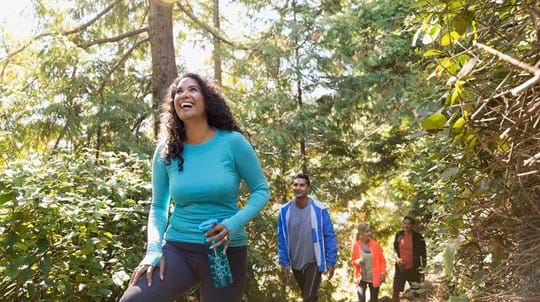
Visiting woods
Walking
Taking a walk in the woods is the easiest way to enjoy the outdoors and get closer to nature.



























